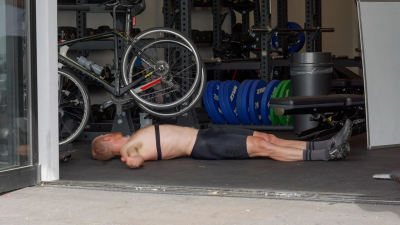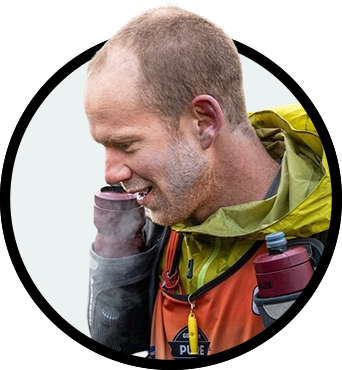Tapering for an event can be a lot like choosing the perfect bike saddle: what works wonders for one person might be a nightmare for another. Sure, there are common approaches backed by science, but it’s crucial to experiment and find what suits you best.
Many factors influence an effective taper: training history, the type of sport (running might need more taper, while swimming might need less), and the nature of your training block leading up to the event (the longer the build-up, the longer the taper).
The golden rule of tapering
Earlier in my career, my tapers were quite different from what they became later on. Back then, I needed about three weeks to taper before a goal event. I’d reduce my training volume by 75% three weeks out, 50% two weeks out, and finally 25% in the week of the race. The intensity and frequency of each sport stayed similar, but with shorter durations.
Later in my career, I found I needed less reduction, and my taper became two weeks instead of three. I still felt a benefit in keeping some intensity in training, often seeing personal bests in shorter repeats as I freshened up into the race, which was always a good confidence boost!
Reflecting on past races, I realised some tapers were less than optimal. The golden rule of tapering is that you can’t get fitter, but you must get fresher.
Over-training is a bigger risk than under-training if the key training block has gone well. One of my highest Chronic Training Load scores - which is a TrainingPeaks measure of overall fitness - led to a disappointing performance at the 2020 Coast to Coast race in New Zealand.

I had been achieving personal bests all summer, but on race day, my body felt like it was stuck in third or fourth gear. After finishing second (having won the year before), a debrief with my coach revealed that I had gone into the race tired, not shedding enough fatigue in the taper weeks. It was a harsh lesson: fitness means nothing if freshness doesn’t allow it to shine.
To further reinforce this, I made a last-minute decision to race IRONMAN® New Zealand three weeks later, given I felt I had nothing to lose, even though I hadn’t swum in over a year. Three weeks later, I raced to a very satisfying fifth position (I was the third-fastest bike/run of the day) and felt a much better energy from my body, which had been missing at the Coast to Coast. The extra three weeks of active recovery (and a crash course in swimming) helped shed all that extra fatigue.
Taper structure
The way I now structure a taper for the athletes I coach is very individualised but follows a similar pattern.
For a priority event, I usually do the final key build week with four weeks to go, so the athlete arrives at three weeks out feeling appropriately buried. They then get a very light training week leading into the weekend (most of my athletes work full-time jobs).
Two weekends before the big race, I like to give them a medium-length key training session (such as a brick bike/run for my full-distance triathletes). With a little freshness from the week leading in, I try to use this session to build confidence and refine the race plan (e.g. we’ll identify some nutrition and pacing targets to rehearse for race day). Often, this session goes well, and the confidence can carry them through the last two weeks. Even when it doesn’t go well, it can usually be quickly rationalised by residual fatigue, which should still be present in the body two weeks before the race.
The final two weeks are really just a case of dialling back training volume and keeping some feel for the sport(s) through relatively frequent but shorter training sessions. Again, at a time when confidence can be important, I like to make sure my athletes have a bit of freshness before any key sessions during this time (e.g. a couple of easy days, then a day with some pace or power targets, which I know they will hit given they’ll be fresher, and the targets I designate are usually very achievable to help grow confidence).
Another general rule I apply is a full rest day (with some exceptions) two days before the race, focusing on getting gear and meals organised, so that the next day can be a case of some short, easy training to build back a little bit of feel and relieve some stress and nerves.
Then, plan to put the feet up and relax as much as possible for the rest of the day (which relies on being organised the day before). Often, bikes and gear need to be checked in the day before, so the more organised an athlete can be prior to this day, the more chance they have of getting some relaxation and downtime in around the admin side of things.
It should be noted that my personal competing and coaching experience lies more with long-distance endurance events, where the need to be rested is generally higher and the taper period longer. If you compete in shorter events such as middle-distance running or pool swimming, your taper will likely be shorter and steeper.
Remember, finding the right bike saddle is a personal journey. Someone’s recommendation might not work for you. The best approach is to consult an expert, try different options, and find what suits you. The same goes for tapering. Use less important lead-in races to trial different taper approaches and learn from them. Post-race debriefs are invaluable for understanding what worked and what didn’t, setting you up for success in your next big event.
